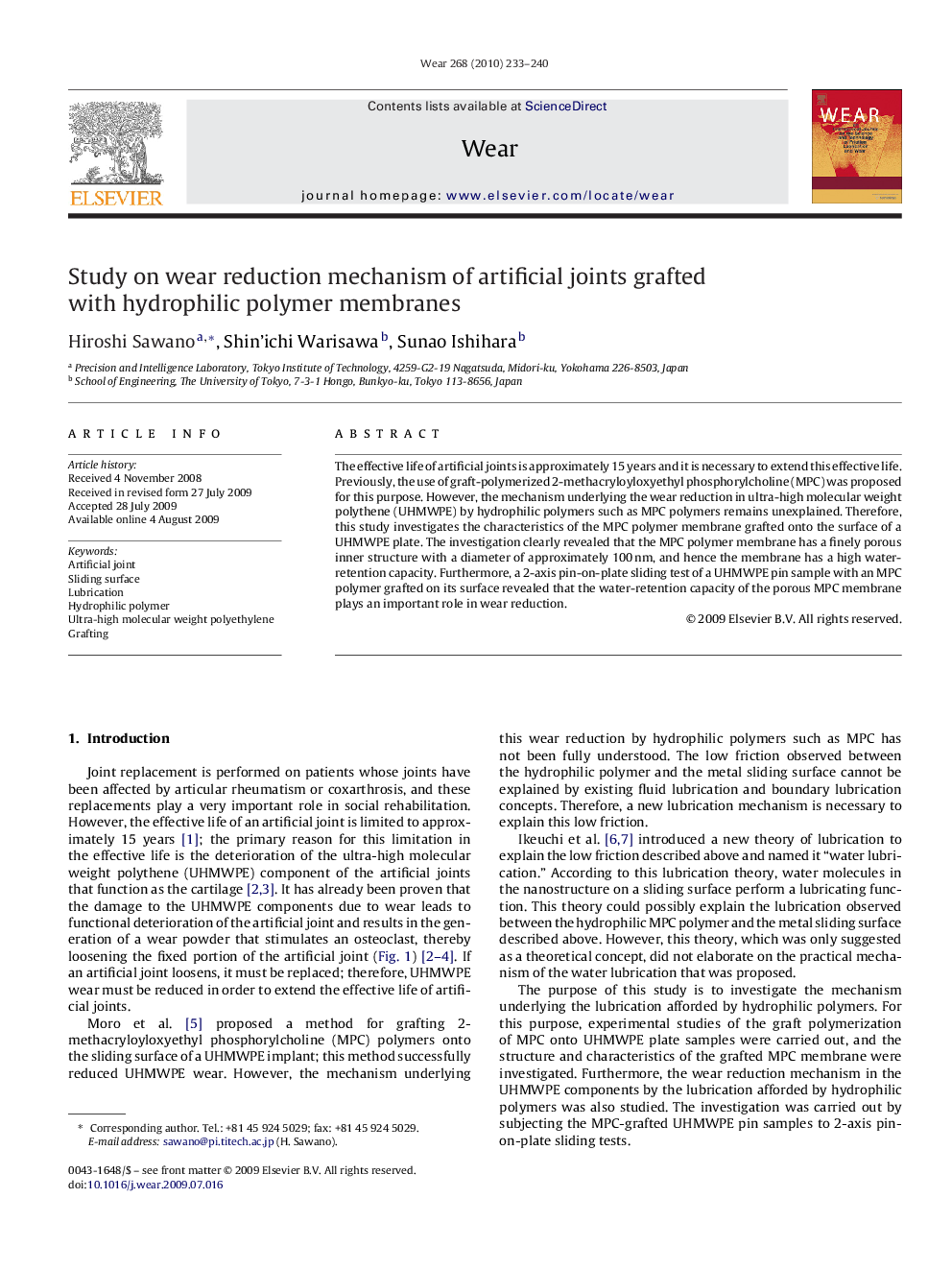| Article ID | Journal | Published Year | Pages | File Type |
|---|---|---|---|---|
| 618911 | Wear | 2010 | 8 Pages |
The effective life of artificial joints is approximately 15 years and it is necessary to extend this effective life. Previously, the use of graft-polymerized 2-methacryloyloxyethyl phosphorylcholine (MPC) was proposed for this purpose. However, the mechanism underlying the wear reduction in ultra-high molecular weight polythene (UHMWPE) by hydrophilic polymers such as MPC polymers remains unexplained. Therefore, this study investigates the characteristics of the MPC polymer membrane grafted onto the surface of a UHMWPE plate. The investigation clearly revealed that the MPC polymer membrane has a finely porous inner structure with a diameter of approximately 100 nm, and hence the membrane has a high water-retention capacity. Furthermore, a 2-axis pin-on-plate sliding test of a UHMWPE pin sample with an MPC polymer grafted on its surface revealed that the water-retention capacity of the porous MPC membrane plays an important role in wear reduction.
